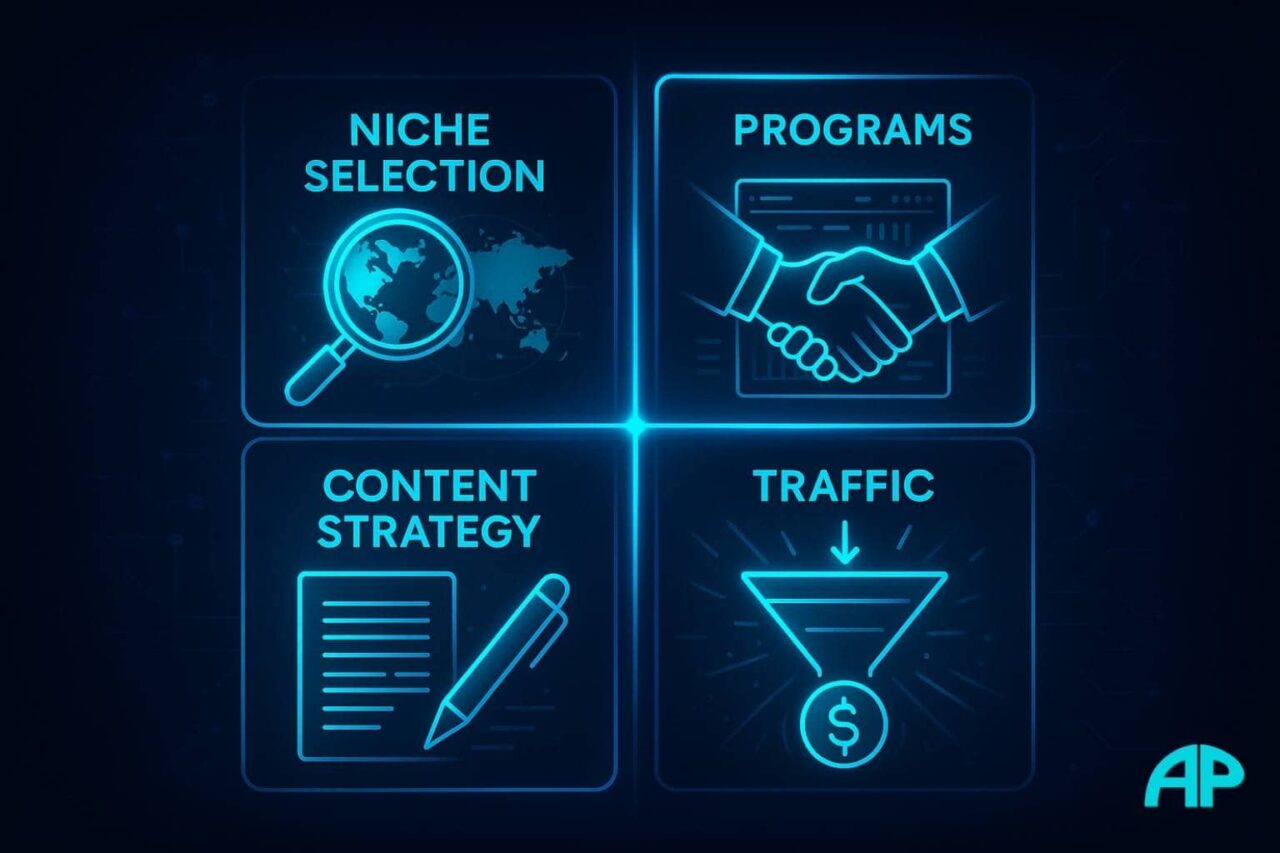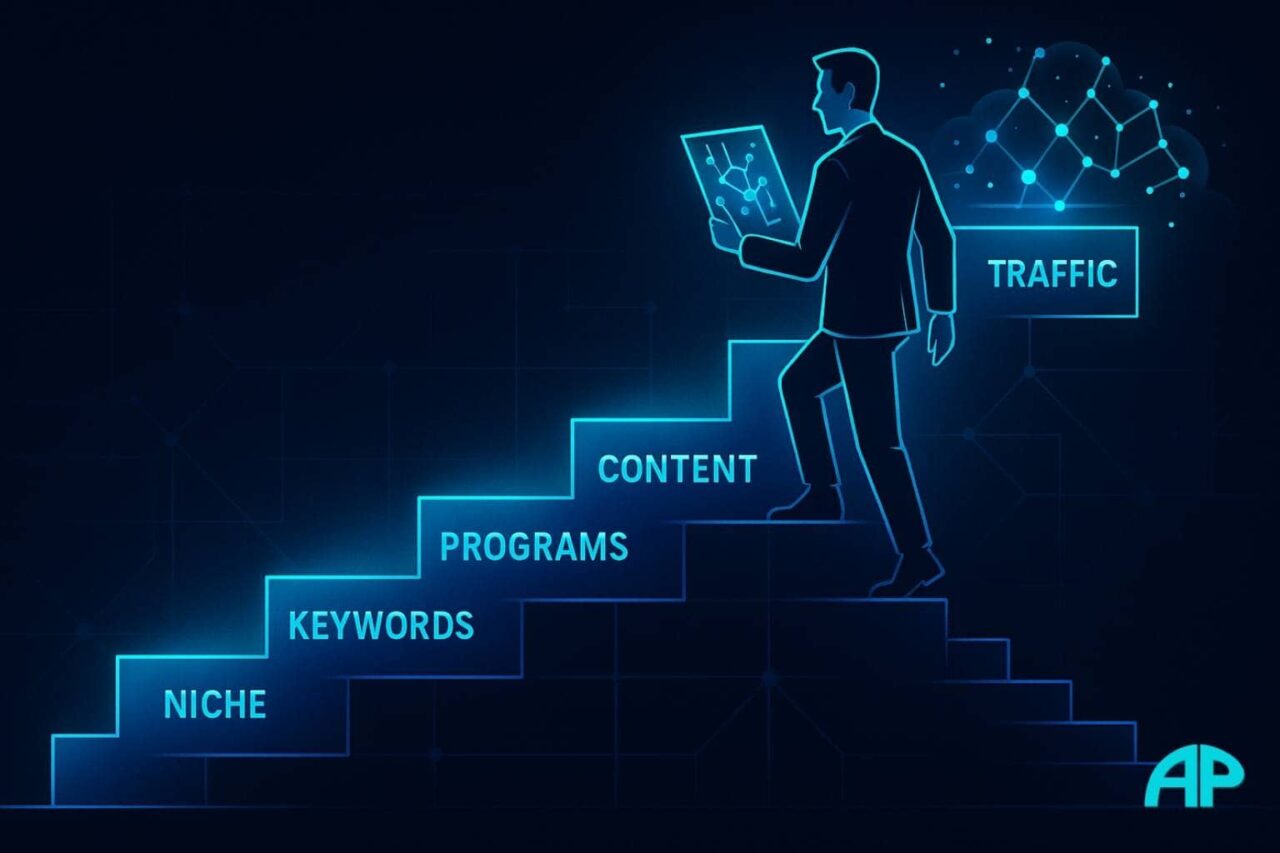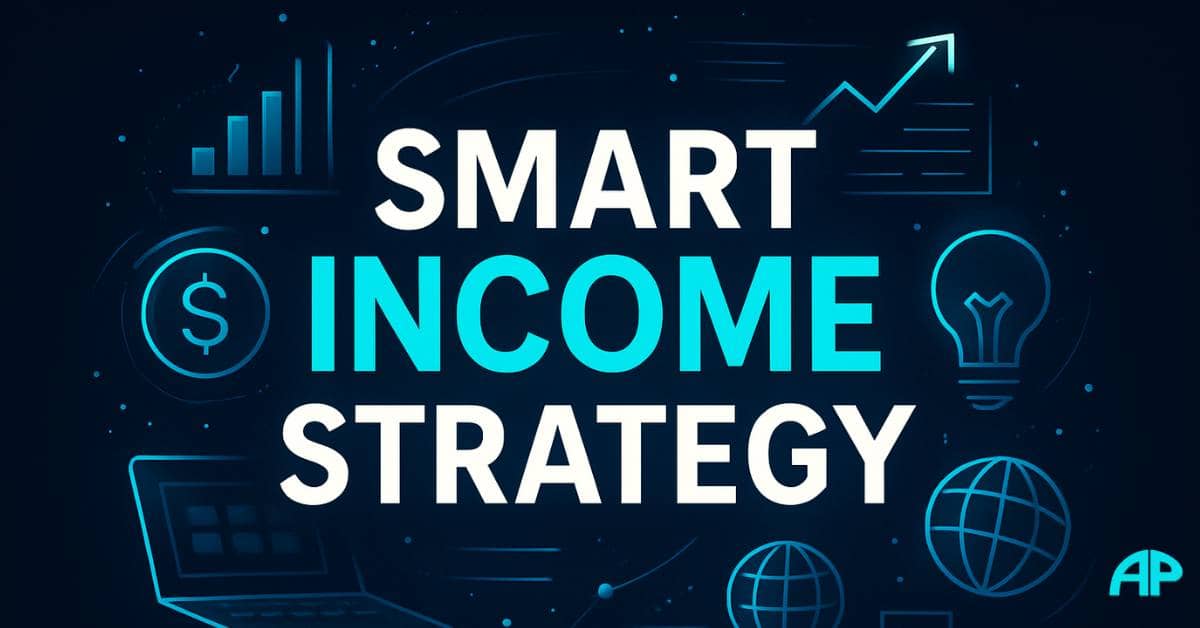Unlock the best affiliate marketing business model for real income, freedom, and long-term growth.
If you’re looking to build real income online, this guide breaks down the best affiliate marketing business model step by step. It’s simple, scalable, and built for long-term success.
Table of Contents
- Why This Model Beats the Rest
- Key Traits of a Winning System
- Core Parts That Make It Work
- My Personal Case Study Results
- Your Step-by-Step Game Plan
- Frequently Asked Questions
- Final Thoughts and Action Steps
Best Affiliate Marketing Business Model: Introduction
What if you could build a business that runs 24/7, without stock, staff, or stress — and still makes money while you sleep? That’s the promise of affiliate marketing. But here’s the truth: not all strategies work equally. Some people struggle for months. Others build sustainable online income in a fraction of the time — with less effort and more clarity.
The difference? Choosing the right business model.
In this post, we break down the best affiliate marketing business model — one built for freedom, profit, and long-term scalability. You’ll discover how to choose from the most profitable affiliate niches, where to find high-converting affiliate programs, and how to apply a winning affiliate marketing content strategy that actually drives results.
Stick with this blueprint, and you’ll avoid the common traps that keep beginners stuck — and start building something real.
What Makes the Best Affiliate Marketing Business Model Work?
Not all affiliate strategies are created equal. The best models share a few critical ingredients: they’re profitable, low risk, easy to scale, and built for long-term sustainability. They allow you to work once and earn repeatedly without needing to manage inventory, chase clients, or trade time for dollars.
So what defines the best affiliate marketing business model?
It starts with a laser focus on demand. You’re not just promoting products. You’re solving real problems for specific audiences. That means choosing from the most profitable affiliate niches. These niches aren’t just popular. They’re evergreen, backed by buyer intent, and tied to high-quality programs that pay well over time.
Next, you need leverage. That means content that works on your behalf like SEO-friendly blog posts, helpful videos, or email sequences that convert readers into buyers.
Finally, the model must be scalable. You want systems that grow without burning you out. Something you can build once, improve over time, and eventually automate or outsource.
The best affiliate marketing business model gives you freedom and financial growth without complexity. Let’s break down what it looks like in action.
Breaking Down the Core Components of the Best Affiliate Marketing Business Model

A successful affiliate business is built on four core pillars. Each one plays a vital role in making the entire system profitable, scalable, and sustainable. Here’s how they work together to support the best affiliate marketing business model.
Niche Selection and the Most Profitable Affiliate Niches
It all starts with picking the right niche. Choosing from the most profitable affiliate niches is critical. These are markets where people are actively looking for solutions and are ready to spend money. Think health, wealth, relationships, productivity, and tech.
To validate a niche, look for:
- High search volume with buyer intent
- Recurring needs or subscriptions
- Plenty of affiliate offers with solid commissions
Use tools like Google Trends, Ahrefs, and keyword planners to explore demand and competition. Don’t guess — research.
Finding High-Converting Affiliate Programs
Once you’ve locked in a niche, your next step is choosing the right products. Not all affiliate programs are created equal. Look for high-converting affiliate programs that offer:
- Trusted brands or products with existing demand
- Recurring commissions or high-ticket payouts
- Reliable tracking and transparent reporting
The best programs often include sales funnels, bonuses, or email follow-up to help close the sale for you. This is where your earnings multiply without extra effort.
Affiliate Marketing Content Strategy That Sells
Content is your engine. A smart affiliate marketing content strategy turns traffic into income. You don’t need to be a pro writer. You need structure and intent.
Key content types include:
- In-depth product reviews
- Comparison articles
- How-to guides and tutorials
- Problem-solving blog posts
- Email sequences and lead magnets
Each piece should target a specific keyword, answer a real question, and direct readers toward an affiliate link naturally. Focus on solving problems, not selling products.
Traffic and Amplification Channels
Great content is useless without traffic. The best affiliate strategies rely on consistent, targeted visitors. Start with organic search, then layer in other channels.
Your top traffic sources:
- SEO and long-tail keywords
- Email list building and newsletters
- YouTube or short-form video platforms
- Social media (used wisely)
- Occasional paid ads once you’re profitable
The goal is control. Own your traffic sources and build assets that bring people back again and again.
Case Study Snapshot: How the Best Affiliate Marketing Business Model Worked for Me
A few years back, I went all in on affiliate marketing. I didn’t chase trends or spam links. I followed a structure that combined niche research, strategic content, and high-quality affiliate programs. The results changed everything.
I started by targeting one of the most profitable affiliate niches I could find — health and wellness. I joined a few high-converting affiliate programs offering recurring commissions and solid brand trust. Then I created a simple blog and followed a clear affiliate marketing content strategy built around solving real problems.
Within 6 months, my site ranked for multiple keywords and started generating commissions daily. Instead of posting every day, I focused on evergreen content. Social media wasn’t a priority. I built assets that worked while I lived my life.
The key wasn’t just effort. It was structure. By focusing on the best affiliate marketing business model, I created something that grew over time without burning out.
If I had to start again, I wouldn’t change a thing, except maybe do it sooner.
Step-by-Step Blueprint to Build the Best Affiliate Marketing Business Model

If you’re starting from scratch or rebuilding with intention, here’s the roadmap. This isn’t theory. It’s the same framework used by top affiliates who build real, freedom-based income streams that last.
Step 1: Define Your Niche and Ideal Audience
Start by choosing from the most profitable affiliate niches — markets where people spend consistently. Focus on solving problems, not pushing products. Narrow it down enough to stand out, but broad enough to grow with.
Ask:
- What problems are people searching to solve?
- Is there buyer intent?
- Are there affiliate programs that serve this need?
Step 2: Map Out a Keyword and Topic Strategy
Use keyword tools to build a content map. Focus on long-tail keywords that match search intent. Organize your blog or channel into content clusters that guide people from awareness to action.
Step 3: Join High-Converting Affiliate Programs
Once you’ve got a clear audience and keyword plan, join high-converting affiliate programs in your niche. Prioritize programs that:
- Offer recurring or high-ticket commissions
- Provide sales funnels and marketing materials
- Have low refund rates and strong credibility
These partnerships are the backbone of your revenue. Choose wisely.
Step 4: Create Content Using a Proven Affiliate Marketing Content Strategy
Stick to formats that convert:
- In-depth reviews
- Tutorials
- How-to guides
- Listicles
- Email sequences
Your affiliate marketing content strategy should focus on delivering value first. Be helpful, honest, and specific. Insert affiliate links naturally within genuine recommendations.
Step 5: Build Organic Traffic and an Email List
Your blog or content hub should be optimized for SEO. But don’t stop there. Capture emails from day one using lead magnets. This list becomes your most valuable asset.
Traffic sources to focus on:
- Organic search (blog or YouTube)
- Pinterest (for evergreen content)
- Simple opt-in pages shared via social or ads
Step 6: Track, Improve, and Scale
Monitor what works. Use analytics to spot top-performing posts. Improve headlines, CTAs, or internal linking. Repurpose your winners into new formats like videos, carousels, or email campaigns.
Once something works, double down. Then outsource or automate to free your time and grow even faster.
This blueprint is how you build the best affiliate marketing business model — without hype, burnout, or tech overwhelm. It works because it’s built on timeless principles and focused action.
Overcoming Common Challenges in Affiliate Marketing
Even with the best system, you’ll hit roadblocks. The good news? Every challenge you face has already been solved by someone who stuck with it. Here’s how to push through when most people quit.
Low Traffic and Slow Growth
This is the most common frustration. You’ve written the content, picked your niche, but the clicks aren’t coming. Don’t panic. Focus on your affiliate marketing content strategy. Tighten up your on-page SEO, build internal links, and target longer-tail keywords with less competition.
Remember, content is a long game. One well-optimized post can rank and generate income for years.
Burnout and Inconsistency
It’s easy to lose motivation when results are slow. That’s why you need a clear system. Instead of creating random content, follow a plan based on the most profitable affiliate niches and proven formats. Batch your work, schedule breaks, and automate where you can.
This is a business, not a hustle. Treat it like one.
Choosing the Wrong Programs
Not all offers convert, even if the niche is solid. If your traffic is clicking but not buying, audit your links. Switch to high-converting affiliate programs with better funnels or commission structures. Test everything. Track clicks. Replace what’s underperforming.
Every obstacle is a lesson. The difference between quitting and scaling is your ability to adapt, improve, and keep going.
Frequently Asked Questions About the Best Affiliate Marketing Business Model
1. What is the best affiliate marketing business model for beginners?
The best model for beginners is content-driven, niche-focused, and scalable. It uses blog posts, videos, or email to promote trusted products in high-converting affiliate programs. You don’t need to be an expert, but you do need a plan and consistency.
2. How do I find the most profitable affiliate niches?
Start with evergreen problems people are actively searching to solve. The most profitable affiliate niches usually relate to health, wealth, relationships, or productivity. Use keyword tools to find high-volume, low-competition topics and validate them through affiliate platforms.
3. Do I need a blog or website?
Technically no, but it’s highly recommended. A blog gives you full control, helps you build authority, and is the backbone of any strong affiliate marketing content strategy. It’s also much easier to rank content and collect emails from your own platform.
4. What makes an affiliate program “high-converting”?
A high-converting affiliate program typically offers strong brand trust, optimized sales funnels, recurring commissions, and a history of delivering results for other affiliates. Look for programs with high EPC (earnings per click) and low refund rates.
5. How long does it take to make money with affiliate marketing?
It depends on your niche, traffic source, and how focused you are. Some see results in 60 to 90 days. For others, it may take 6 months or more. If you follow a clear affiliate marketing content strategy and stick to high-quality programs, your chances of success go up significantly.
Conclusion: Build the Best Affiliate Marketing Business Model That Works for You
You don’t need to reinvent the wheel. The path is proven. The best affiliate marketing business model isn’t about spamming links or chasing trends. It’s about choosing the right niche, aligning with high-converting affiliate programs, and following a smart affiliate marketing content strategy that builds trust and delivers real value.
This model works because it’s built on fundamentals: solve problems, serve your audience, and scale with content that lasts.
Now it’s your turn.
Start by auditing your niche. Map out your content plan. Join programs that pay you well for products you believe in. And most importantly, take action. You don’t need to be perfect. You just need to get started.
What niche are you planning to build in? Drop it in the comments or reach out, I’d love to hear your ideas.

Could This Be Your First Step Toward Freedom?
If you’re tired of the daily grind and ready to live life on your own terms, this is your launchpad. Whether you’re just starting out or need a clearer direction, these six steps will guide you in building income, leveraging your voice, and reclaiming your freedom.
What Would Happen If You Just Started?
- 🚀 Start an Online Business – Learn the essentials and build something real.
- 👻 Ghost Commerce Guide – No face, no fluff — just assets that work while you sleep.
- 💸 Affiliate Marketing for Beginners – Turn your passions into passive income.
- ✍️ Start a Blog That Pays – Share your truth and build a brand around it.
- 🔁 Take the 7-Day Shift – Rewire your mindset. Reset your life. In just one week.
- 🌴 Build a Freedom Business – Work less. Stress less. Live free — for real.
👉 Pick one. Take action. Your freedom starts here.


